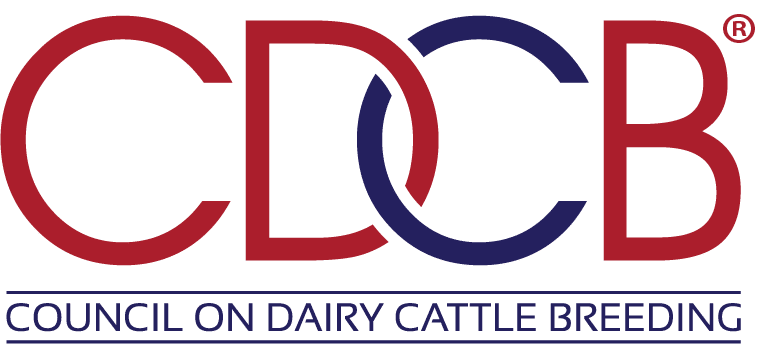The MFEV predicted transmitting ability (PTA) represents the expected resistance of an animal’s offspring to hypocalcemia, also known as milk fever. Genetic and genomic evaluations for resistance to hypocalcemia or milk fever are provided for Jersey and Holstein males and females. Evaluations are expressed in percentage points of resistance above and below the breed average. Larger, positive values are more favorable.
Resistance to Hypocalcemia (MFEV)
MFEV measures the resistance to hypocalcemia or milk fever.
Benefits of Trait
Introduced in April 2018, genetic and genomic evaluations for resistance to hypocalcemia or milk fever (MFEV) are provided for Holstein males and females. Evaluations are expressed in percentage points of resistance above and below the breed average.
- Although hypocalcemia can be easily treated with intravenous calcium, it is also a risk factor for peripartum diseases such as mastitis, retained placenta, displaced abomasum, and ketosis, as well as increased culling.
- Including a direct measure for MFEV will allow producers the opportunity to select animals genetically more resistant to developing hypocalcemia.
- Direct cost of hypocalcemia is $34 per case. This does not include any associated costs such as decreases in production and fertility already accounted for in Net Merit.
Hypocalcemia Trait (MFEV)
Breeds: Holsteins (April 3, 2018), Jerseys (April 7, 2020), and Brown Swiss
Unit of Measurement: Percentage points. The average resistance rate is equal to 98.7% in U.S. Holsteins. The resistance rate is equivalent to the incidence rate subtracted from 100.
Daughters of a Holstein bull with a MFEV PTA of +0.5% are expected to have an average resistance rate to hypocalcemia of 99.5% (assuming the breed average resistance is approximately 99%). Daughters of a Holstein bull with a MFEV PTA of -1.0% are expected to have an average resistance of 98%. Daughters from the bull with PTA -1.0% are expected to have four times the number of cases hypocalcemia as daughters from the bull with PTA of +0.5%
| Breed | Mean GL for Cows | Mean GL for Heifers | Mean GL for the current base year (2010) |
| Holstein | |||
| Jersey | |||
| Brown Swiss |
MFEV is included in selection indices for Holsteins, Jerseys and Brown Swiss as part of the Heath $ sub-index (light blue).

The only significant (P < 0.05) correlation with PTA for resistance to hypocalcemia was with SCS PTA at -0.29, indicating animals that resist milk fever are more likely to have lower somatic cell scores. Resistance to hypocalcemia was not significantly correlated with other trait PTA such as protein yield, productive life, livability, or reproductive traits such as daughter pregnancy rate, cow conception rate, and heifer conception rate.
Estimated heritability is 0.6% for resistance to hypocalcemia (observed scale).
Young genomic bulls are expected to have reliabilities averaging 40% for resistance to hypocalcemia, and progeny tested bulls are expected to have genomic reliabilities averaging 44%. As additional data is accumulated, reliabilities will increase.
| Breed | Average Reliability for GL of Young Genotyped Bulls by Breed |
| Holstein | |
| Jersey | |
| Brown Swiss |
The standard deviation (variation) for MFEV PTA is 0.4%. Because 1 and 2 standard deviations normally include 68% and 95% of observations, respectively, we assume about 68% of bulls will have a MFEV PTA between -0.4% and +0.4% while 95% of the bulls will range from -0.8% to +0.8%.
MFEV PTAs range from 1.3 percentage points below to 0.6 percentage points above average in evaluated Holstein bulls born since 1990 with reliabilities of greater-than or equal-to 75%.
Pre-release analysis indicates the active AI Holstein sires in December 2017 (614 bulls) range from -0.5% to +0.4%, with the average at approximately 0 percentage points.
CDCB MFEV evaluations were developed using producer-recorded data collected through Dairy Herd Information (DHI) affiliates from herds across the U.S. Strict editing was applied to ensure only the most reliable data was included for the development of genetic evaluations. The edited data included a total of 1.2 million MFEV records from over 720,000 cows. These health records are used in conjunction with lactation data available in the CDCB cooperator database.
Future Development
In the future, further model improvements and development will be researched and tested. This may include the development of a multi-trait model that incorporates multiple metabolic disorders.
Related Publications
Reinhardt, T.A., J.D. Lippolis, B.J. McCluskey, J.P. Goff, and R.L. Horst. 2011. Prevalence of subclinical hypocalcemia in dairy herds. Veterinary Journal 188:122–124. doi:10.1016/j.tvjl.2010.03.025.
Donnelly, M. R., A. R. Hazel, B. J. Heins, & L. B. Hansen, 2018. Health treatment cost of Holsteins in 8 high-performance herds. J. Dairy Sci. (in preparation).
Liang, D., L.M. Arnold, C.J. Stowe, R.J. Harmon, & J.M. Bewley, 2017. Estimating US dairy clinical disease costs with a stochastic simulation model. J. Dairy Sci. 100(2): 1472–1486.
Information last updated March 2018.
